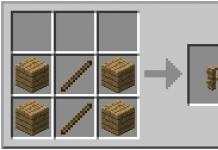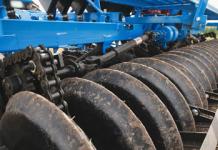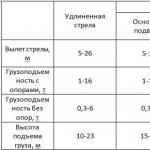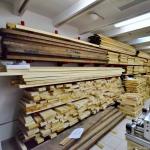Agrotechnics of sweet pepper in open and closed ground conditions includes several components. This is timely watering, loosening, fertilizing with mineral or organic fertilizers, as well as pest and disease control. But, in addition to these standard and mandatory measures, there is one more thing - the correct formation of a plant bush. The formation of pepper in the greenhouse and on the beds in the open field is an agricultural technique, which in many cases cannot be dispensed with if you want to get a decent harvest of this nightshade plant. Information on how to properly form bell pepper bushes will be useful to everyone who grows it on their plots.
Many vegetable growers who have been growing pepper on their plots for many years believe that it is necessary to form it so that the fruits are large, beautiful and fleshy, and the yield is high. Others believe that even without this technique, it will be possible to get a good harvest of tasty and juicy fruits, if the fruit-bearing plants are provided with water and fertilizers.
It was for such gardeners that breeders bred several varieties and hybrids of this plant, which are characterized by low growth and poor formation of twigs:
- Varieties - Victoria, Topolin, Zodiac, Gift of Moldova, Dobryak, Florida and others.
- Hybrids - Maxim F1, Claudio F1, Mercury F1, Gemini F1 and others.
These peppers do not usually need bushing and can be left to grow as is. In this case, only partial pinching is possible if the plants are planted too densely and shade each other. From them, remove all weak, barren and inward-directed branches.
For medium-sized and tall varieties and hybrids that grow up to 1-2 m, the need for the formation of pepper is obvious. They grow fast and branch heavily, so if all the shoots are left, they will form a lot of ovaries, but the ripened fruits will be small and thin-walled. In addition, overgrown green mass is ideal conditions for the occurrence of diseases and the reproduction of pests.

It is necessary to form tall peppers, regardless of how much they grow, that is, proper formation is necessary:
- early varieties and hybrids, the fruits of which reach technical maturity approximately on the 100th day after germination;
- mid-season plants, the first fruits of which ripen on the 135th day;
- late-ripening peppers, the fruits of which can be harvested on the 145-160th day.
Thus, the formation of a pepper bush is an agricultural technique aimed at obtaining the largest yield of high-quality fruits. It is carried out by timely removal of excess leaves and side shoots of plants in order to provide the remaining necessary amount of nutrients, air and sunlight. This is not a one-time procedure - the formation of pepper consists of several successive stages that are performed one after the other throughout the entire growing season of pepper.
Rules for the formation of a pepper bush
In protected ground conditions, at high temperature and humidity, sweet bell pepper bushes tend to grow luxuriantly and form a relatively small number of generative organs. Therefore, only with the help of the correct formation of pepper in the greenhouse, you can get the amount of fruit that the cultivated variety or hybrid is capable of. It is necessary to start the formation of peppers in the greenhouse already at the seedling stage.During the seedling period
If you are growing bell pepper seedlings with your own hands, start shaping it when it grows to a height of about 15-20 cm. Usually, when the seedlings reach this size, they begin to branch and divide into 2 identical branches. Between them, the first bud is formed, which is called the crown. It can open up and bloom even before planting seedlings in a permanent place in the greenhouse. Remove this first bud, which appeared on the pepper, so as not to load the growing bushes with fruits ahead of time and allow the plants to branch.
If you have some particularly valuable variety growing, then leave crown buds on a couple of the strongest and most developed bushes. From the fruits that grow from them, it will be possible to collect varietal seeds for further reproduction.
in the greenhouse
In warm, heated greenhouses, for example, in a polycarbonate greenhouse, sweet pepper has all the conditions for rapid growth and an increase in green mass, so plant seedlings in such a way that in the future the bushes have enough space for a trouble-free vegetation. Place the peppers in the greenhouse according to the scheme 50 by 70 cm (about 3-6 pcs. per 1 sq. m. for plants with strong bushiness and 6-8 pcs. for medium bushiness).
Perform the formation of pepper bushes in the greenhouse in the following sequence:
- The leaves located on the stem up to the main fork are gradually removed, as well as the resulting stepchildren.
- The shoots that have grown after the first branching are the so-called skeletal branches or branches of the 1st order. Usually there are 2 of them. If there are more, delete the rest. This will begin to form the pepper into two stems.
- In turn, skeletal shoots are also divided into 2 branches. Leave the strongest of them, and cut off the other after the first leaf and flower. On the remaining branch, leave all the leaves, buds and ovary.
- With branches of the 3rd order, do the same: select the strongest and leave all the vegetative organs on it, and cut the second with a knife or pruner after the 1st leaf and bud.
- Form all branches of subsequent orders in the same way.
If you decide to form a pepper bush using the 2 stem method, even before planting the seedlings in the greenhouse, install the trellis so that each order of newly growing branches can be tied to the crossbar. This must be done without fail, because under the weight of the pouring fruits, thin and fragile sprigs of pepper can break. Such branches will wither, and with them all the fruits tied to them will die. Tie the branches with thin twine, carefully wrapping it around each shoot counterclockwise.

Do not forget to periodically inspect the boles of peppers and remove barren shoots and lower leaves that may grow on them during the growing season. Remove all stepchildren and unnecessary shoots directed inside the bush, as well as yellowing and fading leaves. About 1.5 months before the planned end of the harvest, pinch the growing points of all fruiting branches to stop their growth and redirect the nutrients to the ripening peppers. With this formation scheme (in the form of a V-shaped bush), approximately 20-25 large and fleshy fruits can be obtained from one pepper.
In the open field
Only medium and vigorous varieties and hybrids of this vegetable plant are subject to the formation of peppers in open ground. Undersized, as well as in greenhouses, do not need it. Form pepper plants in the following sequence:
- When the seedlings are established and have reached a height of about 25-30 cm, remove their crown buds and pinch off the top on the main stems. This will cause the peppers to start bushing. The basis of the bush will be 3-5 skeletal shoots of the first level, formed from the fork of the shoot (it is better to remove the rest).
- At each subsequent level of side shoots that appear on the bush, keep approximately the same number of branches, pinch the rest above the first bud and leaf (these flowers will bear full fruit).
- Do not forget to cut off the lower leaves of peppers, all growing stepchildren, barren fattening shoots (lower shoots that form on the trunk), crooked and growing in the middle of the bush, as well as yellowing leaves. This will force the plants to more rationally redistribute the nutrients coming from the roots.
- When a sufficient number of fruits have formed on the pepper, pinch the skeletal branches or cut off their tops. After that, the already formed ovary of sweet peppers will grow rapidly, and a new one will not form. But new side shoots and leaves will also continue to grow.
Finish the formation of sweet pepper in the open ground a month before the end of the season, so that all the fruits that have set have time to ripen.
In order to properly form pepper bushes in open and closed ground, pay attention to the advice of experienced gardeners who, from their own experience, are convinced of their practical value. So:
- If not one, but several crown buds form on the seedlings of peppers, all of them must be removed immediately. This will enable young bushes to grow fruit-bearing shoots located above.
- On too densely leafy pepper plants, it is necessary to cut off excess leaves, even if they are healthy and green, so that they do not take away the juice intended for the fruit. But you shouldn’t get too carried away with this, because leaves are important vegetative organs of plants, and without them, the normal existence of peppers is impossible.
- Consider weather conditions during the growing season of peppers. In the summer drought, it is better not to cut off the leaves of the peppers growing on the lower branches and the stem to the fork - they will create a shadow and cover the ground, which will not allow it to overheat. In rainy weather, on the contrary, these leaves must be removed without fail so that the earth is well ventilated and excess moisture does not stagnate on it, creating perfect conditions for the development of bacterial and fungal diseases.
- The most recent removal of leaves should be done no later than 30-45 days before the expected date of collection of the last fruits, otherwise they will not ripen.
The formation of pepper in the greenhouse is mandatory for all types of this plant. For each variety, such an event may be slightly different. For example, when growing sweet peppers, you have to completely remove the stepchildren and pinch the top.
If you have to prune low varieties, then only a small part of the shoots is removed, which is the lowest location.
What varieties need to be formed
Before you form peppers in the open field or in a greenhouse, you need to figure out which types of plants need it. Gardeners are engaged in the cultivation of varieties that can be molded among themselves by the duration of ripening. The following types of peppers are distinguished:
- Ultra-early - technical maturity is reached in exactly three months.
- Early - fruits ripen within 100 days.
- Medium early - the first peppers ripen 130 days after planting.
- Late - will sing five months after planting.
Also, the bushes may differ in their height. All varieties can be divided into:
- dwarf - below 40-45 cm;
- undersized - grow up to 50-60 cm;
- medium-sized - the height of the bushes does not exceed 100 cm;
- tall - the average height of an adult plant is about 200 cm.
The formation of peppers is carried out for all varieties, except for dwarf ones. They bear fruit well even without pruning the bushes, provided that the planting scheme has been fully observed.
When pinching low-growing bushes, it is enough to cut off weak shoots that grow inward. A tall pepper bush needs a lot of nutrients. If during growth it grows strongly, then ideal conditions will be created for the appearance of dangerous pests and diseases. Therefore, pruning of such bushes is carried out without fail in order to protect the plant and improve its nutrition.
Formation methods
To understand how to form peppers in the open field, you need to familiarize yourself with the basic methods of pinching. During pruning of many varieties, various methods are used. There are three main methods for pruning bushes.
In one stem
Quite often, this option is used if a lot of seedlings are planted, and the bed is not very spacious. By shaping the bush in this way, the plant will receive more light, as most of the shoots and leaves will be removed.
To form a bush in this way, it is necessary to break out all the stepchildren and its twins that appear during the bifurcation of the stems. Only all flower brushes are left on the plant.
In two stems
This method is the most popular, as it is suitable for many varieties of pepper. Thus, you can get a small and powerful bush that can easily withstand the weight of even the largest fruits.
During the formation of pepper in two stems, not only the main stem is left, but also its first stepson. It is he who develops faster than other stems. All other shoots must be disposed of.
in three stems
This option is used when few seedlings have to be grown on a large plot. To form a bush in three stems, you must adhere to the following recommendations:
- Two stepchildren are left on the plant, which are below the first flower brush.
- The bush is carefully examined and another well-developed and strong stepson is selected.
- All remaining stepchildren are removed.

Many people do not know how to stepson pepper in a greenhouse. There are a number of specific rules that will help you perform this procedure correctly:
- You should not pinch peppers if the weather is too hot and dry for several days. In this case, it is better to leave leaves on the bushes so that they can protect the plant from burning out. The formation of a pepper bush in a greenhouse during such a period can lead to its death. Removing all unnecessary shoots, soil and bushes to lose additional protection from the sun.
- Pinching tools can be carriers of dangerous infections. Before the procedure, it is recommended to disinfect them with antiseptics.
- Pasynkovanie pepper is not carried out if the height of the bush is less than 20-30 cm. This can adversely affect growth and fruiting.
- You can not form a bush if it is sick. Because of this, he may die.
- It is not recommended to pinch pepper if it is planted too infrequently. The distance between each bush should be at least 25 cm. Bushes, near which there are no other plants, should be left with dense greenery.
Basic tricks
During the formation of plants, three main methods are used.
Topping
Pinching is carried out in order to stop the growth process and send all the nutrients to the young fruits. Pinching is a must. If this is not done, then all useful elements will be spent on the development of stepchildren, side shoots and leaves.
pasynkovanie
The bushes stepchild to provide the fruits with nutrients. It is necessary to remove only those stepsons that have grown to 4-5 cm.
pruning
Pruning is done when a large number of unnecessary shoots appear. After pruning, only a few of the most developed stems remain on the plant, which are far from each other.

Stages of formation
The process of pinching peppers in open ground is carried out in several stages. In this case, it is recommended to use a clean tool that is not covered with rust.
crown bud
Young seedlings of bell pepper have one stem, but over time, the plant begins to branch and new ones appear. In the place where new branches are formed, the first flower is formed. Quite often it is called the crown bud. The essence of the first stage of formation is its removal. This is done in order to accelerate the development of culture.
Sometimes several such buds appear on the bushes at once. In this case, you will have to get rid of all the flowers so that the greenhouse pepper can branch well.
This procedure is carried out even if the buds appeared before the pepper was planted in open ground.
Extra shoots
The second stage of formation is carried out after the first 10 leaves grow at the bush. In this case, all unnecessary branches are removed from the peppers in the greenhouse and only a few shoots are left that were formed by the fork of the main bud. Weak branches are shortened - the upper point of growth is removed from them. All remaining shoots will form the basis of an adult pepper.
After removing the extra stems, bush peppers need to be observed for several weeks. Over time, the shoots will begin to branch and a new bud will appear on each of them. They can also form in internodes. The buds that are there must be removed immediately.
Of all the new stems, you need to choose the strongest, and get rid of the rest. This is done in order to improve the supply of nutrients to the ovaries. This operation should be carried out after each branching of the bush. If weak shoots are not removed in a timely manner, the plant will gradually begin to weaken.
After the completion of the second stage, the pruned bush should have no more than 25 ovaries.

fruitless shoots
After removing all the extra stems, the sweet pepper bush in the open field or in the greenhouse begins to develop rapidly. Over time, empty shoots begin to appear on the plants, which will have to be disposed of. They appear at the bottom of the bush, not far from the branching of the main stem.
In addition, at this stage, sweet peppers in the greenhouse are covered with extra leaves that do not take part in the nutrition of the ovaries and create an additional shadow. Also, sometimes damaged leaves appear, due to which the plant develops various diseases.
If you do not remove the extra leaves in a timely manner, then the pepper will begin to seriously reduce the yield. To do this, it is recommended to adhere to the following scheme:
- Cut the leaves on the main stem only after they enter the stage of technical ripeness. No more than two sheets are removed at a time.
- The second removal should be carried out after the formation of the peppers of the second brush.
- The last stage of leaf removal is carried out 1-2 months before the full ripening of the fruit.

Topping
To form sweet and large fruits, the bushes will have to spend quite a lot of energy, which is often spent to maintain new and unnecessary ovaries. Most beginner gardeners make the same mistake - they leave a lot of ovaries that the bushes cannot feed.
At a late stage in the development of peppers, many new flowers appear. However, they do not increase the yield, but only weaken the newly formed fruit. It is because of this that the fourth stage of the formation of bushes is carried out, during which growth points are pinched on all branches. Thanks to this, the plant spends all its strength on the development of new peppers.
Conclusion
To understand how to form pepper in a greenhouse or open field, you need to familiarize yourself with some recommendations. It will also help with the formation of pepper in a greenhouse video, with which you can familiarize yourself with the features of this process.
Up to a certain point, the pepper grows in one stem, but when it reaches a height of 15-20 cm (depending on the variety), it begins to branch, forming several branches. At the place of branching, the first flower bud is formed, which vegetable growers call crown.
It should be removed for better branching and development of the bush.
Stage two - removal of excess shoots
Most often, plants form in two or three shoots, leaving the strongest of those that have formed from a fork with a crown bud. The rest pinch - that is, cut off the growth point, the top.
As a rule, by this moment 10-12 leaves are already formed on the bush. The remaining shoots of the first order are called skeletal, and they will form a bush.
Skeletal branches soon begin to branch in the same way as the main stem, forming a "fork", in the center of which a bud is formed.
We do the same with such branches: we leave the strongest shoot, and pinch the weak ones above the flower bud and the first leaf.
For reference. It is imperative to leave one leaf on the shoot to be removed, as it nourishes the ovary of the future fetus located under it.
main stem (stem);
shoots of the first order;
shoots of the second order;
main skeletal branches.
With each subsequent branching, we do exactly the same, pinching weak shoots above the first leaf.
Flower buds will appear on each branch, and subsequently ovaries. They are left, and those that grow in the internodes are removed. In total, it is enough to leave 15-25 fruits on one bush.
Stage three - removal of barren shoots and lower leaves

Instructions for growing peppers recommend periodically inspecting the developing bush and identifying barren shoots by removing them. They form below where the main stem branches.
Leaves should also be removed there, which do not participate in the nutrition of the ovaries in any way, but obscure the plantings and suck the juices out of the plant.
Advice. At the same time as this event, remove damaged and diseased leaves from the bush, wherever they grow. The price of the issue is the health of the whole plant.
It is important to remember that the formation of ovaries, the growth and ripening of fruits depend primarily on the lighting of greenhouses. If the plant does not have enough light, even with abundant flowering, the fruits may not set.
Therefore, as it grows, it will be necessary to cut off all the extra leaves:
The leaves on the main stem are cut off when the fruits from the first cluster reach technical maturity (corresponding to the size and shape of the variety).
When the fruits grow on the second brush, the leaves located under it are removed.
Attention! You can cut no more than two leaves at a time!
Do the same with the leaves under all other ripening fruits. But the last removal must be done about a month and a half before the end of the season and the final harvest. At this time, the plant should be left alone.
Stage four - pinching skeletal branches
When a sufficient number of fruits have formed on the bush, pinching growth points on the main branches helps to accelerate their growth. The plant stops growing and expends energy on new ovaries, completely directing them to existing ones.
This process must also be carried out one and a half months before the expected end of pepper cultivation.
Conclusion
You should think about the formation of bushes even at the stage of planting seedlings: the scheme for planting pepper in a greenhouse can seriously affect this process. In addition, it is desirable to consider the design of trellises for tall varieties, in which each skeletal shoot is tied up separately.
If you do not ignore these important processes for caring for pepper, he will thank you with an excellent harvest.
Until now, there is no consensus on whether it is necessary to form the bell pepper bush itself. Many gardeners believe that their active participation in growing a vegetable ended at the seedling stage. After all, you still need to take care of the plant. In part, this opinion is correct, especially when it comes to low-growing varieties.
How to shape pepper:
Is it necessary to form sweet peppers in a greenhouse?
If pepper is grown on an industrial scale, then the formation of a bush is extremely necessary, as it affects the amount of the future crop and the rate of fruit ripening.
But in harsh climatic conditions, where the summer is short, the artificial restriction of individual ovaries will help others improve the quality of existing fruits.
In other words, tying a bush will help solve two problems - to increase the yield or to make the existing one better.
Different varieties
Depending on the type of pepper, approaches to the formation of a bush will also differ:
- High-grade varieties require the mandatory tying of each branch.
- For medium-sized peppers, it is enough to simply remove the barren twigs or lower shoots.
- Dwarf varieties can not be formed at all, unless the seedlings were planted very tightly. In this case, a variety of diseases can develop on the plant.
IMPORTANT: All this is done so that the vegetable does not spend extra energy on maintenance. And also in order to improve ventilation and illumination of all parts of the plant.
We form correctly
The rules for the formation of a bush will depend on the variety of pepper, the conditions in which the vegetable is located. So, in an open area or an unheated greenhouse, a plant can grow up to only 60 cm.
The formation of a pepper bush includes the following steps:
- Determine landing pattern.
- Remove crown bud.
- Get rid of unnecessary escapes.
- Remove excess leaves and barren shoots.
- Pin the skeletal branches.

Only a healthy pepper bush can be formed. Otherwise, you can spread the disease.
Landing pattern
Usually, the seed packaging will indicate how this particular variety should be planted. It is also necessary to think about the landing pattern when designing a greenhouse, since each greenhouse has its own personality.
In general, for low varieties, it is customary to retreat between bushes 20-30 cm, and all the rest - 35-40 cm.

Crown bud removal
Such a flower is called the ovary that formed immediately in the first fork. The pepper itself initially grows with one stem, and then begins to branch out. In order for the ovaries located above to receive sufficient nutrition, the first bud on the lower fork is removed.
pasynkovanie
The meaning of the action is to correctly distribute the nutritious juices in the pepper, which is grown in the greenhouse. This must be done as early as possible.
Pepper Shaping Secrets:
It is necessary to remove all shoots, leaves and buds that will appear in the forks, leaving only the strongest of them.
The correct bush looks like this:
- Main stem.
- 2 branches from it.
- The first shoots that appeared on two side branches.
- Skeletal branches.
IMPORTANT: When removing the shoot, one leaf is left, which is located under it. The nutrition of the plant will depend on it.
Removal of excess leaves and barren shoots
On the main trunk, up to the first fork, ovaries and shoots may occur. They must be removed immediately.
It is also necessary to cut off those leaves that cover the ovary from the light. So the fetus may not develop at all.
REMEMBER: Only 2 leaves are cut at a time. If you remove all the greens at once, the plant may die.
It is also necessary to remove damaged greens.
When the fruit reaches technical maturity, the leaves under it must be cut off. The last greens must be harvested a month and a half before harvest.
Pinching skeletal branches
 When the location and number of fruits is formed on the bush, you need to take care of their ripening properly. For these purposes, the top of the skeletal branches is cut off, thereby stopping its growth. So all the forces of the bush will go to the ripening of the fruit. This should be done one and a half months before the end of cultivation.
When the location and number of fruits is formed on the bush, you need to take care of their ripening properly. For these purposes, the top of the skeletal branches is cut off, thereby stopping its growth. So all the forces of the bush will go to the ripening of the fruit. This should be done one and a half months before the end of cultivation.
All the measures taken will help the pepper ripen faster and produce tasty and juicy fruits.
Many gardeners are skeptical about the formation of pepper in a greenhouse. Although this procedure prolongs the fruiting period, accelerates ripening, reduces morbidity, and increases yield. Formation is not necessary for all varieties of peppers. There are varieties that do not need it.
Pepper is a bush plant. Shoots are formed throughout the growing season. With a large amount of green mass, the crop suffers. The fruits do not correspond to the declared weight and size, the walls are thin.
Gardeners complain about regrading, bad seeds. Although the problem is not this, but the lack of control over the quantity and quality of shoots. With their rationing, the nutrition of the fruits will be intense. They will ripen faster.
Significance for different crop varieties
To obtain high yields, tall (70 cm and above), medium-sized (50-69 cm) bushy-type pepper varieties must be formed. Low-growing varieties with bushes of the standard and semi-standard type do not need to be formed.
Standard varieties have only one stem, which branches in the upper part. In semi-standard forms, from 1 to 3 short shoots are formed. In bushy varieties, the central shoot branches along its entire length, forming long shoots.
Which pepper does not require shaping
For those who do not want to waste time on the formation of bushes, varieties and hybrids of weakly branching undersized peppers are suitable.
The process of forming pepper bushes
The correct approach to the formation of bushes allows you to prolong the fruiting of a vegetable crop, increase the yield, accelerate the ripening of fruits, and increase their taste and commercial qualities. This is achieved by creating favorable conditions for development and purposeful redistribution of nutrients.

Schematic arrangement of seedlings
When transplanting seedlings into the ground, follow the scheme recommended by the manufacturer, it depends on the characteristics of the variety (hybrid).
Pinching the crown bud
The crown bud is formed first. It appears when the height of the seedlings is 15-20 cm. The crown bud is located in the first branching of the trunk. Its early flowering and the formation of the ovary will slow down the development of the seedling. Therefore, experienced gardeners remove it without regret. If several flowers appear in the fork, they are all plucked.
There will be no yield loss. On the bush, after transplanting into the ground, new buds will quickly form. They refuse to pinch the crown bud if they grow varietal peppers, they want to get their seeds. In the fruit formed from this flower, they are of the highest quality.

Pasynkovanie sweet pepper
Stepchildren appear in the axils of the leaves. In a seedling 25-30 cm high, all stepchildren 3-4 cm long, located below the first fork, are removed. In one run, no more than 3 pieces are plucked on a bush. The plant does not suffer with this approach. The pinching procedure is carried out systematically.
Pruning leaves and sprouts
Due to the lack of light, the stems are stretched, flowering and fruiting are delayed. Removing leaves improves the illumination of the bush. After the fruits growing in the first fork reach technical ripeness, all the lower leaves are cut off from any varieties of pepper (short, tall). Purpose of this procedure:
- ensure free air circulation;
- normalize the level of humidity;
- reduce the risk of fungal diseases;
- improve the illumination of all parts of the bush;
- accelerate maturation.
In plants, growth points on the branches are routinely removed. Pinching the tops, gardeners have 2 goals:
- direct the flow of nutrients to the formation of fruits;
- stop the growth of shoots, make them branch.

Bushes are regularly inspected. Prune the shoots if there are too many of them or if they grow inwards. Leave 2-3 stems on each plant. Choose the strongest. Leaves are removed from all varieties, even dwarf forms. Pruning and pinching the tops are subjected only to tall and medium-sized bush-type plants.
Formation of the skeletal part
Pepper bushes lead into two stalks. The basis of the skeleton is two strong branches extending from the first fork. This is the fork where the crown flower is formed. All other branches are cut. The left branches extending from the central stem are called shoots of the first order.
As they grow, new branches appear on them. Flowers form in their axils. Leave the strongest stems, cut the rest. These shoots are called second-order shoots. Fruits are formed from buds located in forks.
The nuances of the formation of pepper: the influence of temperature and humidity
The optimal conditions for the development of culture are daytime temperatures of 20-28 ° C, night temperatures of 18-20 ° C. In this case, the soil temperature should not fall below 18 ° C. The heat is bad for crops. At temperatures above 30 ° C, the flowers fall off, the fruits develop poorly. The buds fall off if the soil and air humidity is low.

in the greenhouse
In greenhouses and greenhouses, the yield directly depends on the scheme of planting seedlings and the formation of bushes. It decreases significantly if the plants are planted densely. Reasons for low yield:
- lack of light, because of this, the development of plants stops;
- stagnant moist air creates conditions for the reproduction of fungi, plants begin to hurt.
Bushes of dwarf varieties do not form. With a dense planting, they are thinned out. Medium-sized varieties are formed according to a simple scheme:
- on the central stem, leaves and stepchildren are removed to the first fork;
- pluck the crown bud(s);
- remove all barren shoots located below the main branches;
- after finishing the 2nd collection of fruits, pinch the tops of all stems.
The scheme for the formation of tall varieties is much more complicated. It is carried out in stages. First, cut out (break out) everything that is below the fork (stepchildren, leaves). The bush has a central stem and 2 lateral shoots of the first order. They are the base (the skeleton of the bush). These branches are tied to a trellis or support.

In each fork of the stem of the first order, up to 3 shoots of the second order are formed. Leave the healthiest. On the second, the ovary and the 1st leaf are not touched, the rest is pinched. The third branch of the II order is removed. In the forks of skeletal branches of the II order, shoots of the III order are formed. The scheme of their formation is similar to the previous one.
In the open field
Bush varieties of peppers growing in the garden lead to 3 stems. Shoots are removed along the entire length of the bole (from the base to the 1st fork). After branching, all fruit-bearing and barren (extra) shoots are cut out, as well as those that grow inside the bush.
Formative pruning is carried out in dry weather. Wounds heal faster. The probability of infection with fungi and viruses is lower. Tall varieties of pepper need support. The central stem is tied to it just below the fork.
Be sure to fix to the pegs (trellis) all shoots of the first order. In undersized varieties, all stepchildren are plucked at the bottom of the stem. Low bushes are also tied to a support. Partially remove leaves touching the ground.
To obtain large thick-walled fruits, experienced gardeners are advised to regulate the fruit load. In their opinion, it should not exceed 15-25 ovaries per bush. Leave 1 leaf above each ovary. It will provide nourishment to the fetus.

Although many gardeners believe that the optimal ratio of leaves and fruits is 2: 1. Each fruit should have 2 leaves. In the southern regions, it is not advised to cut off the leaves. They create a shadow, this reduces the evaporation of moisture from the soil.


















